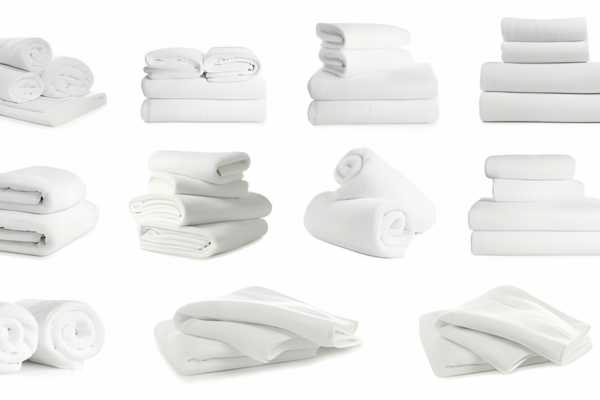Ah, the timeless elegance of white sheets! Their crisp, clean appearance instantly uplifts any bedroom, but keeping them spotless? That’s a whole different ball game. Regular cleaning is key, and here’s a game-changer: bleach. This trusty ally not only tackles tough stains but also restores that just-bought whiteness. So, if you’re aiming for bed sheets that look and feel heavenly, a splash of bleach during your laundry routine can make a world of difference. Remember, it’s not just about clean sheets; it’s about maintaining that pristine, inviting look.
Why Choose White Sheets?
Opting for white sheets is a smart choice for any decor enthusiast. Their aesthetic appeal is unmatched, creating a serene and inviting ambiance in any bedroom. Versatility is another big win; white sheet effortlessly blend with any color scheme, making them a go-to choice for those who love to switch up their decor without hassle. Plus, there’s something about white sheet that screams cleanliness. They visually amplify the sense of purity and hygiene, offering a peaceful retreat after a long day. In a nutshell, white sheet are not just a choice, they’re a statement of style and cleanliness.
Understanding Different Types of White Sheets

Diving into the world of white sheets, you’ll encounter a variety of materials, each with its unique charm. Cotton, a classic favorite, is known for its breathability and durability, making it a comfortable choice year-round. Linen, with its natural fibers, offers a uniquely crisp texture and improves with age, though it can be prone to wrinkles. Percale, a tightly woven cotton or polyester, boasts a cool and crisp feel, ideal for warm sleepers, but may feel a bit stiff initially. Sateen, on the other hand, offers a silky smooth touch and a slight sheen, though it’s less breathable and may not suit hot sleepers. Each type brings its own set of pros and cons, catering to different preferences and needs.
Importance of Regular Washing
Regular washing of sheets is more than a chore; it’s a crucial step in maintaining hygiene and prolonging their lifespan. Clean sheets ward off dust, allergens, and skin oils, ensuring a healthier sleep environment. This practice not only benefits your skin and overall health but also keeps your sheets in prime condition. Frequent washing prevents the buildup of dirt and oils, which can break down fabric fibers over time. By keeping up with a regular cleaning schedule, you’re not just ensuring a fresh, clean bed to dive into every night; you’re also investing in the longevity of your sheets, making them a lasting part of your cozy haven.
When to Use Bleach
Using bleach in your laundry is a powerful move, especially when tackling stubborn stains or aiming for disinfection and whitening. It’s your go-to solution for those hard-to-remove spots that regular detergents can’t handle. Bleach not only breaks down tough stains but also sanitizes, making it ideal for sheets exposed to germs or illness. And when it comes to white sheet, bleach plays a pivotal role in restoring and maintaining their pristine, bright appearance. However, it’s crucial to use it judiciously; overuse can weaken fabrics. Deploy bleach when you need that extra punch in your cleaning arsenal, and watch it work its magic, giving your sheets a fresh, vibrant look.
Choosing the Right Bleach

Selecting the right bleach is key to effective cleaning without damaging your fabrics. Chlorine bleach, known for its robust whitening power, is a champion against tough stains and germs but can be harsh on delicate fabrics. It’s best suited for hardy materials like cotton and linen. On the other hand, oxygen bleach, gentler and color-safe, is a fantastic choice for colored and more delicate fabrics. It brightens and disinfects without the risk of fading or damage. Understanding the compatibility of bleach types with various fabrics ensures not only a deep clean but also preserves the integrity and appearance of your sheets. Careful selection tailors your laundry routine to the specific needs of your linens, ensuring longevity and cleanliness.
Preparation Before Washing

Before diving into laundry day, proper preparation is crucial, especially when it comes to washing sheets. Begin by sorting your sheets by material. This step ensures that each fabric type receives the care it needs and prevents damage from incompatible wash settings. Delicate materials like silk or sateen require a gentler approach compared to robust ones like cotton or linen. Next, always check the care labels. These labels are your cheat sheet to understand the ideal washing conditions for each fabric, including water temperature, cycle type, and whether to use bleach or not. By tailoring your approach to each set of sheets, you’re not just cleaning them effectively; you’re also extending their lifespan and maintaining their quality.
Step-by-Step Guide: Washing White Sheets with Bleach

Washing white sheets with bleach can be straightforward if you follow these steps:
- Pre-Treatment of Stains: Begin by treating any visible stains on your sheets. Apply a small amount of diluted bleach directly to the stain or use a stain remover. Gently rub the area and let it sit for a few minutes before washing.
- Proper Bleach Measurement: Measure the bleach carefully according to the manufacturer’s instructions. Overuse can damage the fabric, while underuse may not effectively clean or whiten the sheets. For a standard load, usually, a half cup of bleach is sufficient.
- Choosing the Right Washing Cycle: Select a washing cycle that is appropriate for the fabric of your sheets. Use a gentle cycle for delicate fabrics and a regular cycle for sturdier materials like cotton. Ensure the water temperature is suitable for the fabric type – usually, warm water works best for white sheet with bleach.
- Adding Bleach to the Wash: If your washing machine has a bleach dispenser, use it to add the bleach. If not, start the wash cycle and add the bleach during the water-filling phase to ensure even distribution.
- Rinsing Thoroughly: After the wash cycle, ensure the sheets are thoroughly rinsed to remove any bleach residue. An extra rinse cycle can be beneficial in ensuring all bleach is washed out.
- Drying: Dry your sheets according to the care label instructions. If possible, line drying in the sun can further help in whitening and freshening up the sheets. If using a dryer, opt for a low heat setting to prevent fabric damage.
Remember, always wear gloves when handling bleach and work in a well-ventilated area to ensure safety.
Tips for Effective Bleach Usage
For effective and safe bleach usage, it’s essential to strike the right balance. Begin by diluting the bleach; a concentrated solution can be too harsh on fabrics and your skin. Typically, mixing one part bleach with ten parts water is a safe ratio for most laundry tasks. This dilution maximizes cleaning power while minimizing potential damage. Equally important is avoiding overuse. Excessive bleach can weaken fabric fibers over time, leading to wear and tear. Use just enough to brighten and disinfect, usually a half cup per standard wash load. Remember, less is often more when it comes to bleach. By using it judiciously, you ensure both the longevity of your sheets and the safety of your laundry routine.
Alternatives to Bleach
Exploring alternatives to traditional bleach opens up gentler, eco-friendly options for keeping sheets bright. Natural whitening agents like baking soda and white vinegar are excellent choices. Adding a half cup of baking soda or vinegar to your wash can enhance the cleaning power of your detergent while naturally brightening the fabric. These substances are less abrasive than chlorine bleach, making them ideal for regular use. Oxygen bleach is another fantastic alternative. It’s color-safe and less harsh than chlorine bleach, effectively removing stains and brightening whites without the risk of fabric damage. These alternatives not only offer a safer way to maintain the freshness and appearance of your sheets but also are kinder to the environment.
Drying and Storing White Sheets
Drying and storing white sheet correctly is crucial for maintaining their pristine condition. To prevent discoloration during drying, avoid direct sunlight which can cause yellowing. Instead, opt for air-drying in a shaded, well-ventilated area or use a dryer on a low heat setting. Over-drying can weaken fibers and lead to a dull appearance. When storing, ensure the sheets are completely dry to prevent mildew. Store them in a cool, dark place, preferably in a breathable cotton bag to protect against dust and light exposure, which can gradually degrade whiteness. Avoid plastic containers, as they can trap moisture and lead to yellowing. Proper storage not only keeps your sheets fresh and white but also extends their lifespan, ensuring they remain a cozy part of your bedding for a long time.
Common Mistakes to Avoid
Navigating the care of white sheets can be tricky, and avoiding common mistakes is key to their longevity. A major misstep is an overusing bleach, which, while effective in moderation, can weaken fibers and shorten the life of your sheets if used excessively. Always measure bleach carefully and follow the recommended amounts. Another pitfall is ignoring the care instructions on the labels of your sheets. These guidelines are tailored to the specific fabric type and ignoring them can lead to damage, such as shrinking or tearing. By respecting these instructions, you ensure that your sheets are cleaned effectively while preserving their quality and appearance. Remember, proper care goes a long way in maintaining the beauty and comfort of your white sheet.
Dealing with Yellowing Over Time
Yellowing of white sheet over time is a common issue, often caused by body oils, sweat, and product residues. To combat this, regular laundering with a mixture of baking soda and vinegar can help. These natural ingredients work together to break down the oils and lift the yellowing without harsh chemicals. For more stubborn discoloration, soaking the sheets in a solution of oxygen bleach and water before washing can be effective. It’s important to avoid chlorine bleach for yellowing as it can sometimes worsen the problem, especially on older or delicate fabrics. Sun-drying the sheets after washing can also aid in naturally bleaching out the remaining yellow tinges. By understanding these causes and remedies, you can restore and maintain the crisp, fresh whiteness of your sheets.
Additional Tips for White Sheet Maintenance
Maintaining the pristine appearance of white sheets requires a bit of extra attention. Regular inspection for stains is crucial; catching them early makes removal far easier. Be vigilant about potential sources like makeup, lotions, or spills. When you spot a stain, act quickly with a spot treatment. Gentle, natural options like baking soda or diluted vinegar can be effective for immediate treatment before a full wash. It’s also wise to rotate your sheets regularly, as consistent use of the same set can lead to uneven wear and discoloration. Additionally, avoid using fabric softeners, as they can leave a residue that yellows over time. With these proactive steps, your white sheet can remain a luxurious, inviting part of your bedroom for years to come.
Conclusion
Maintaining the allure of white sheets is simpler than it seems. Regular washing, using the right amount of bleach, and opting for gentle alternatives like baking soda or oxygen bleach are key. Paying attention to care labels and avoiding common mistakes such as overusing bleach or ignoring specific washing instructions will prolong the life and appearance of your sheets. Dealing promptly with stains and understanding how to tackle yellowing over time ensures your sheets remain bright and inviting. With these straightforward practices, keeping your white sheet in pristine condition is not just possible, but easy, ensuring they remain a symbol of cleanliness and comfort in your home.
